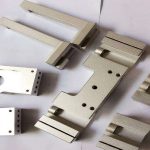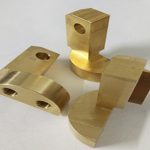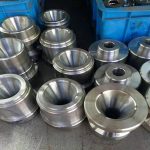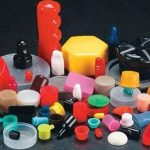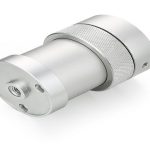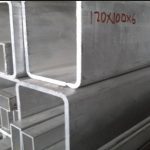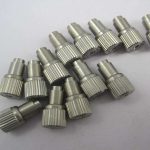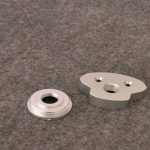Additive Manufacturing (Additive Manufacturing, AM), also known as 3D printing, is a digital manufacturing technology that directly shapes complex three-dimensional structures by simply adding materials layer by layer in two dimensions. It will have a profound impact on the traditional process flow, production line, factory model, and industrial chain combination. It is a representative disruptive technology in the manufacturing industry. It integrates information network technology, advanced material technology and digital manufacturing technology, and is an important part of advanced manufacturing. component.
The essence of 3D printing is additive manufacturing (AM) technology, relying on computer-aided design (CAD), big data, cloud computing, computer-aided manufacturing (CAM), Internet of things, virtual reality (VR) and other technical support, digital or computer model , The manufacturing process of directly forming 3D objects through layer-by-layer accumulation.
Compared with traditional manufacturing technology (subtractive manufacturing, iso-material manufacturing), 3D printing (additive manufacturing) does not need to manufacture molds in advance, does not need to remove a large amount of material in the manufacturing process, and does not need to go through a complicated forging process to get the final product. The product has the characteristics of “removing molds, reducing waste, and reducing inventory”. In terms of production, it can optimize structure, save materials and save energy, greatly improve manufacturing efficiency, and realize the concept of “design-guided manufacturing” at the same time.
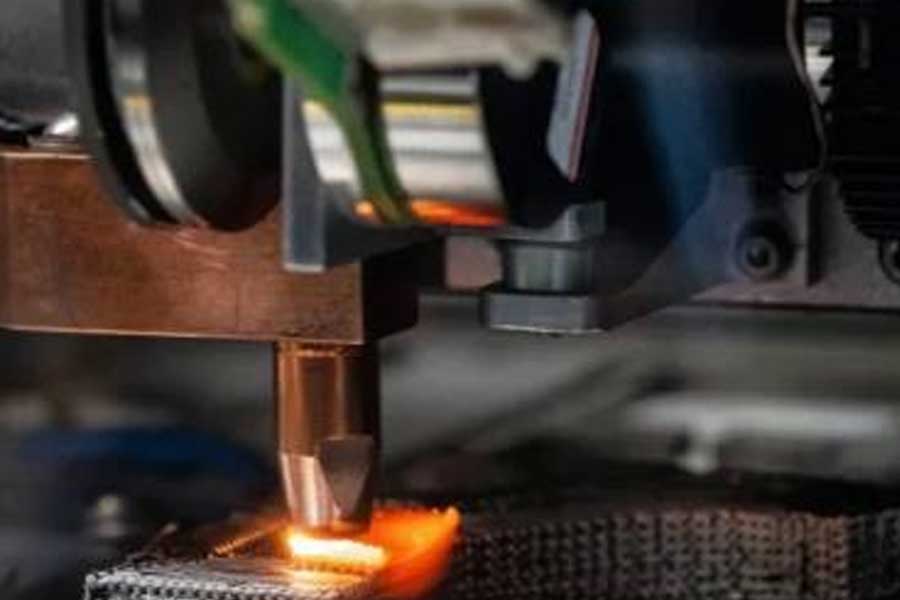
Traditional subtractive manufacturing uses various processing equipment such as lathes and milling machines to remove all unnecessary parts from a piece of material until the required parts are formed, while additive manufacturing starts from scratch and superimposes layers of materials. , And finally a complete part is stacked.
This technology is suitable for new product development, rapid single-part and small-batch part manufacturing, complex-shaped parts manufacturing, mold design and manufacturing, etc. It is also suitable for difficult-to-process materials manufacturing, shape design inspection, assembly inspection and rapid reverse engineering. project.
Metal 3D printing is considered the culmination of all 3D printing. When it comes to strength and durability, nothing can compare to metal. The earliest metal 3D printing patent was DMLS (Direct Metal Laser Sintering), which was obtained by the German EOS in the 1990s. Since then, metal 3D printing has gradually developed many types of printing processes. Now, every metal 3D printer usually uses one of the following four types of processes: powder bed fusion, binder injection, direct energy deposition, and material extrusion. So, do you know how many types of metal 3D printing technology are subdivided?
Direct Metal Laser Sintering (DMLS) and Direct Metal Laser Melting (DMLM)
As the earliest developed metal 3D printing technology, this is also the most popular route at present. Compared with other branch technologies, its advantage lies in the wider material library. The difference between DMLS and DMLM is very vague. The powder particles of the former are sintered, and the powder particles of the latter are melted. But in fact, it is mainly to distinguish patents.
This technology uses powdered metal materials to make objects. It uses powerful carbon dioxide lasers, which are irradiated onto fine metal powders. When the laser traces the geometric structure of the object to be formed, the particles on the laser line fuse with neighboring particles. The process of laser tracking the geometry of the entire layer continues until all points are covered. After the first layer is printed, the template moves down, and the second layer is printed on top of the first layer. This process continues until all layers are printed.
BMD patent (BoundMetal Deposition)
This is a technology developed by DesktopMetal based on 3D printing of polymer materials. The technology uses metal powder rods combined with wax and polymer binders. These metal rods are used as raw materials for the printing system. The printing process is similar to the material extrusion 3D printer, in which the metal rods are heated layer by layer according to the geometric structure of the parts and extruded onto the build platform. The generated 3D printed objects are still in a mixed state, and the final all-metal parts are obtained after sintering.
Selective laser melting (SLM) and electron beam melting (EBM)
Selective laser melting (SLM) and electron beam melting (EBM) are similar types of powder bed cladding metal 3D printing technology, so they are very similar to DMLS technology. The difference between SLM and DMLS is temperature. In SLM, the particles are melted rather than sintered. For this reason, SLM technology is a very energy-intensive process. Melting will also cause stress in the final product. However, the objects printed by SLM are denser and stronger than DMLS. The difference between EBM and EBM is that the heat source uses an electron beam to melt the particles instead of using a laser to melt them. SLM has a wider range of applications, while the size and shape of EBM workpieces are often limited by the vacuum chamber.
Metal Jet Fusion (MetalJetFusion)
The new process developed by HP has four steps: laying the molding powder, spraying the melting auxiliary, spraying the refiner, and applying energy to the molding area to melt the powder. Its characteristics and advantages include: “flux” will be sprayed to the printed part (ie the cross-section of the printed object), which is used to fully melt the powder material; “refining agent” will be sprayed on the outer edge of the printing area to provide heat insulation effect.
In this way, it can not only ensure that the unprinted powder remains loose, and improve the reuse rate of powder (80%, while the utilization rate of ordinary SLS is about 50%), it can also ensure that the surface of the printed layer is smooth and improve the print quality. accuracy.
Arc Additive Manufacturing (WAAM)
Wire Arc Additive Manufacturing (WAAM) is a unique metal 3D printing technology that has shown great potential for large-scale 3D printing applications in a wide range of industries. It is a variant of direct energy deposition 3D printing technology, but uses an arc welding process to melt the wire.
Unlike other metal AM processes, WAAM uses an electric arc as a heat source. The molten metal wire is squeezed into small beads or liquid metal, and adjacent beads are fused together to form a layer of metal. This process is repeated for the entire layer and all subsequent layers until the entire object is 3D printed.
Directed Energy Deposition (DED)
DED literally translates as directed energy deposition technology, which can use metal powder or wire as raw material, push the material into the nozzle, use laser or electron beam (EBAM) in the nozzle to heat, and then sequentially deposit on the build platform. The whole process is carried out under an inert atmosphere to protect the material from unnecessary oxidation.
It is worth mentioning that there are many variants of DED, such as laser, electron beam, rapid plasma deposition (using plasma arc) and wire arc additive manufacturing (using arc), each with its own advantages.
Ultrasonic Additive Manufacturing (UAM)
Ultrasonic Additive Manufacturing (UAM) belongs to the category of sheet lamination of 3D printing technology. In this metal 3D printing technology, metal plates are connected together by ultrasonic welding. Since this technology does not involve any melting, the product formed by this technology maintains both density and strength. After welding, the parts do not require any additional processing or material removal steps.
In UAM technology, different metals such as aluminum, copper, stainless steel, and titanium can be connected together, which makes the strength requirements of the parts more flexible.
Patented solid-state plastic printing technology (MELD)
MELD is patented by Aeroprobe and is now held by MELD Manufacturing Company. It is a unique solid metal additive manufacturing process in which the metal does not sinter or melt. The metal is heated by a combination of high force and friction until the heated metal starts to flow freely. Then, the free flowing metals are “melted” together. The molten metal behaves like a viscous liquid, but it is not a liquid. In this special plastic state, the metal is still solid. This means that you can produce products that match or even better perform than traditional subtractive processing in one step.
MELD is not just a metal additive manufacturing technology. It can provide component repair, metal joining, custom metal alloy and metal matrix composite blanks, part manufacturing and coating applications.
Cold spray
The cold spray additive manufacturing process involves the use of supersonic gas jets to accelerate the powdered metal particles. This high speed plasticizes the powdered material upon impact and forms a solid bond with the substrate. The substrate layer can be a build platform for printing from scratch, or it can be an existing component that deposits materials to build new components or repair existing components.
This process is controlled with the help of industrial robots, which can perform precise movements to create complex shapes. Compared with traditional processes, cold spray technology is faster.
JoulePrinting patented technology
Joule printing is a multi-material metal additive technology developed by Digital Alloys in the United States. It uses metal wire as the base material instead of the expensive powder used in the comparison system. It can work with any metal wire. This technology is fundamentally a simple and high-speed process for melting metal wires into useful shapes.
Water-based metal printing
This technology was developed by the Canadian company Rapidia. As the name suggests, it uses water-based metal paste instead of common resin materials. The water evaporates during the printing process, saving time and does not require a degreasing machine or solvent. This not only speeds up the manufacturing process, but also simplifies the process and eliminates the need for chemicals.
Cold metal fusion
This technology was developed by Headmade Materials, Germany, and the printing process is carried out at 80°C, which is basically the same as the SLS printing procedure. Therefore, in fact, the finished parts still need subsequent degreasing and sintering treatments.
Atomic Diffusion (ADAM)
This technology was developed by the American company Markforged, starting from metal powders combined with plastics to form a 3D shape, one layer at a time. After printing, the parts are cleaned in a degreasing solution and sintered in a furnace. The precision and strength of the parts are very high. Among them, the process of burning off the plastic binder and spreading the metal powder together is crucial.
summary
The main content of this article comes from the summary of the Manufacture3D journal, and the translator has made some additions and adjustments. As the editor said, the article dare not say comprehensive, there must be more available technologies on the market, of course, there are more technologies under development, for reference only by relevant practitioners and enthusiasts.
Link to this article: Do you know how many types of metal 3D printing technology are subdivided?
Reprint Statement: If there are no special instructions, all articles on this site are original. Please indicate the source for reprinting:https://www.cncmachiningptj.com/,thanks!
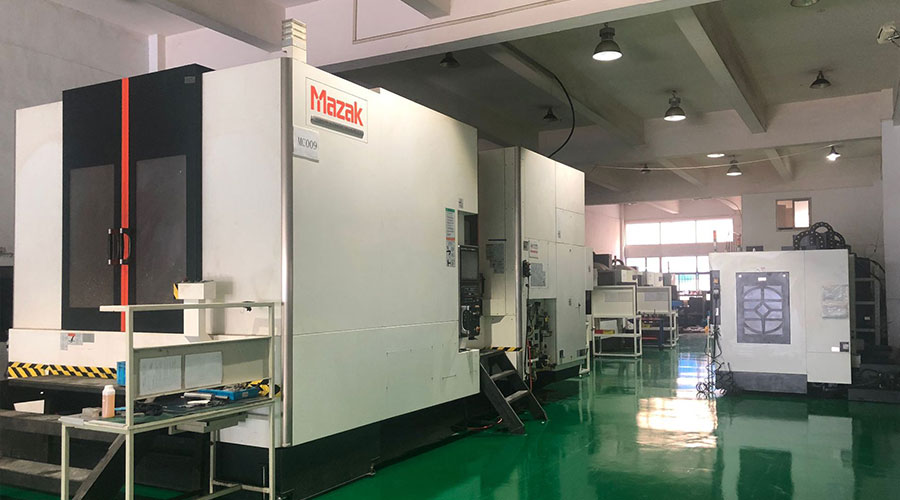 3, 4 and 5-axis precision CNC machining services for aluminum machining, beryllium, carbon steel, magnesium, titanium machining, Inconel, platinum, superalloy, acetal, polycarbonate, fiberglass, graphite and wood. Capable of machining parts up to 98 in. turning dia. and +/-0.001 in. straightness tolerance. Processes include milling, turning, drilling, boring, threading, tapping, forming, knurling, counterboring, countersinking, reaming and laser cutting. Secondary services such as assembly, centerless grinding, heat treating, plating and welding. Prototype and low to high volume production offered with maximum 50,000 units. Suitable for fluid power, pneumatics, hydraulics and valve applications. Serves the aerospace, aircraft, military, medical and defense industries.PTJ will strategize with you to provide the most cost-effective services to help you reach your target,Welcome to Contact us ( [email protected] ) directly for your new project.
3, 4 and 5-axis precision CNC machining services for aluminum machining, beryllium, carbon steel, magnesium, titanium machining, Inconel, platinum, superalloy, acetal, polycarbonate, fiberglass, graphite and wood. Capable of machining parts up to 98 in. turning dia. and +/-0.001 in. straightness tolerance. Processes include milling, turning, drilling, boring, threading, tapping, forming, knurling, counterboring, countersinking, reaming and laser cutting. Secondary services such as assembly, centerless grinding, heat treating, plating and welding. Prototype and low to high volume production offered with maximum 50,000 units. Suitable for fluid power, pneumatics, hydraulics and valve applications. Serves the aerospace, aircraft, military, medical and defense industries.PTJ will strategize with you to provide the most cost-effective services to help you reach your target,Welcome to Contact us ( [email protected] ) directly for your new project.
Link to this article:Do you know how many types of metal 3D printing technology are subdivided?
Reprint Statement: If there are no special instructions, all articles on this site are original. Please indicate the source for reprinting:Tungusten,Thanks!^^

